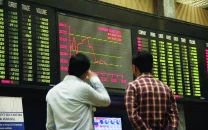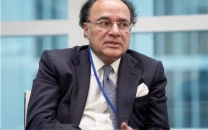Optimising NPC to enhance economic stability
By revising certificate rate downwards, govt can reduce financial burden and remove inefficiencies

The current financial strategy concerning the Naya Pakistan Certificate (NPC) requires urgent attention, particularly the interest rates offered on PKR-denominated certificates.
At present, these rates stand at 21.5% for one-year investment, significantly higher than the State Bank of Pakistan's (SBP) policy rate or one-year T-bill auction rate of 17.5%. This discrepancy has created an inefficient arbitrage opportunity, allowing overseas Pakistanis to earn a 4% premium annually, which is proving costly for the exchequer.
If the higher rate on PKR NPCs is a deliberate strategy to attract USD inflows, it may be justifiable. However, if not, this reflects delayed decision-making that needs to be addressed immediately.
By revising the rate downwards and linking it to more sustainable benchmarks, such as the SBP policy rate, the government can reduce unnecessary financial burdens and remove systemic inefficiencies.
Additionally, Pakistan's Eurobonds, currently trading at 12-13% yields, highlight the perceived credit risk to the country. This contrasts sharply with rates offered a few years ago, when Pakistan's bonds were available at 7-9%.
Given that these bonds are USD-denominated, the burden on the government to repay in hard currency is significant. In comparison, NPC investors who convert USD into PKR are more likely to reinvest locally, reducing the pressure on foreign reserves.
Maximising RDA potential
Since its inception, Pakistan has received approximately $8.5 billion in foreign inflows under the Roshan Digital Account (RDA) programme.
Notably, around 60% of these inflows are converted into PKR assets. This conversion significantly eases the government's burden to arrange USD for outflows, as the majority of the funds are utilised domestically.
This characteristic of the RDA programme underscores its strategic importance in managing the country's foreign currency reserves.
To further optimise the inflows from the RDA programme, the government could consider offering a 1% higher return on USD-denominated NPCs to attract more foreign investment.
Simplifying the process for overseas Pakistanis to use the RDA as a savings account for local expenses would also encourage them to move more funds into Pakistan, providing much-needed liquidity and reducing the need for USD repatriation.
To strengthen economic stability and reduce financial inefficiencies, it is recommended that the government immediately revise interest rates on PKR NPCs to align with the SBP policy rate or the one-year T-bill auction rate. Additionally, offering slightly higher returns on USD NPCs could attract more foreign inflows, supporting the broader economic objectives.
The fact that 60% of USD inflows are converted into PKR assets further alleviates the need for USD outflows, making this strategy even more beneficial for the country's financial stability.
Unfortunately, Pakistan's economic model has created a moral hazard that sub-optimal economic growth of 2-3% along with rapid currency depreciation prompts the labour force to seek employment opportunities outside the country.
To put in perspective, exports fetched $24 billion while remittances received were $7 billion (30% of exports) in 2008 while this year exports of goods and services are expected to touch $40 billion while remittances may cross $34 billion (85% of exports).
Pakistan's policymakers have been too dependent on overseas Pakistanis to finance imports and debt repayment of the indebted populated country.
For the country to grow sustainably, domestic growth needs to be revitalised to attract the global top talent and capital to increase employment opportunities, increase exports-to-GDP ratio and reduce import pressures on substitutable commodities.
Additional USD inflows from remittances must be cautiously utilised to build foreign exchange reserves, reduce external vulnerabilities and improve creditworthiness of the country that may eventually lead to single-digit interest rates, fiscal discipline, a higher tax-to-GDP ratio and a better socio-economic order. Let's hope precious dollars are saved! The writer is an independent economic analyst



















COMMENTS
Comments are moderated and generally will be posted if they are on-topic and not abusive.
For more information, please see our Comments FAQ